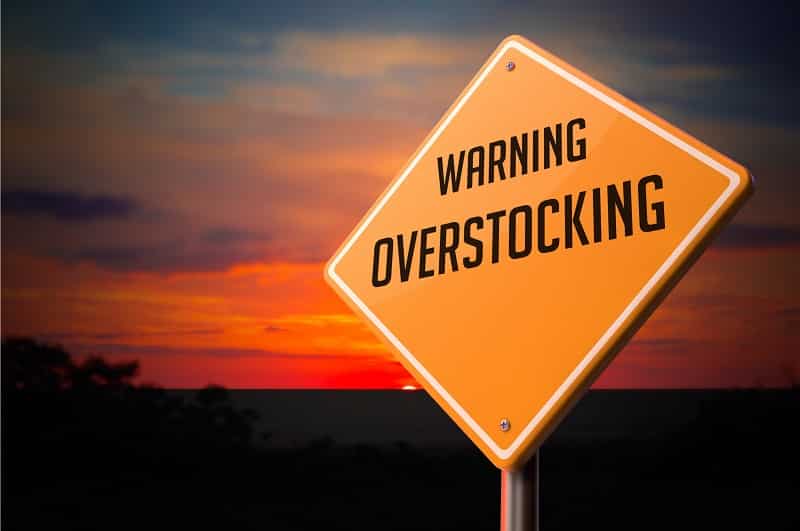Inventory Holding Costs (and How to Handle Them)
If you're up to speed with the latest supply chain headlines, you'll know by now that storage costs are on the rise.
As a proportion of operating expenses, holding inventory is a significant contributor. Retailers are especially vulnerable to excessive storage costs, which makes it all the more difficult to see the price rising after many years of relative stability.
There's never a bad time to explore ways to save money and improve efficiency, which is exactly what we'll do today in terms of reducing inventory holding costs.

The Rising Cost of Storage Space
The US third-party fulfillment and logistics market expanded by approximately 7.5 percent every year between 2009 and 2014. This growth was fueled by increased outsourcing of a variety of supply chain activities, from cargo movement to storage and value-added services.
As demand has grown for order fulfillment services, storage costs have followed suit.
The cost of holding inventory remained relatively low in the aftermath of the Great Recession. Even against the backdrop of robust performance in the supply chain sector, storage costs in the US did not accelerate, in part thanks to the wider economic drag factor.

All that changed in 2015.
According to the annual State of Logistics Report for 2016, commissioned by the Council of Supply Chain Management Professionals (CSCMP), inventory holding costs went up by a little over 5 percent. This followed several years of those same costs sitting at record lows for most US companies.
As we entered 2016 the tables had turned. Businesses optimistically stocked up for increased demand that did not materialize, leaving them with excess inventory. Worse still, that stock now costs more to finance. Most recent figures put the value of inventory in the US at $2.5 trillion as we entered this year, up by more than half a trillion dollars on the 2009 figure.

Big Brands Move to Cut Storage Costs
As inventory holding costs rise, so does the incentive for retailers to reduce the amount that they carry. We've already looked at how big box stores like Target and Walmart are demanding more from suppliers this year and they're not the only ones.
When you think of lower stock levels and minimal deliveries, the expansive aisles of Home Depot probably don't spring to mind. The home improvement chain is renowned for its fully stocked shelves and overwhelming array of products, but that doesn't mean the brand can afford to hold all of those items in storage until we want them. Like any other nationwide retailer, Home Depot must move stock in and out as quickly as it can, while keeping the amount of inventory it has "in back" to a minimum.
This is where Project Sync comes in, an inventory initiative designed to improve the flow of goods into its stores without impacting availability for customers.
Once again, the involvement of suppliers in this initiative is key to its success. Home Depot is asking for deliveries more often but in smaller quantities. This places increased emphasis on those making deliveries to conform to scheduled windows and maintain a high accuracy rate, as well as the potential to push costs upstream.
However, if the supplier is prepared to work with these big brands to drive efficiency improvements and cost reduction, the savings and increased customer satisfaction will mean more business and improved terms further down the line. This is a luxury that household names in retail always enjoy, but not an idea whose benefits need be limited to only big brands.

Get a Handle on Inventory Holding
What works for big brands can work for other retailers, albeit on a smaller scale. Here are some options you can consider to get your inventory holding costs in check:
- Adjust ordering to reflect actual demand, rather than estimates: Forecasting still has its place, but online ordering and advanced data modeling mean that real-world demand can now inform inventory levels in a similar way. Work with data analysts to determine the most efficient order flow based on actual need. This pull-based approach needs to be balanced with the cost of being out-of-stock when a customer wants to order, but implemented effectively it can lead to the kind of lean inventory system that all retailers aspire to.
- Take advantage of long-term agreements: If you're in a position to commit to a long-term storage contract, make sure that you negotiate preferential terms of payment, volume, and priority. Extended terms of payment, service guarantees, and price breaks based on minimums are all areas that can reduce the cost of your inventory holding if negotiations go your way.
- Explore alternative delivery schedules: As Home Depot demonstrates, sometimes more can actually be less when it comes to intake schedules. Increased deliveries on a smaller scale make inventory levels more responsive to customer demand and reduce the cost of having unnecessary items on-hand.
- Bring suppliers further into the fold: If you deal with a large number of providers, ask yourself if you need all of them. The more suppliers you have to juggle, the more deliveries you must manage and the more admin you have to handle. If you can consolidate, review the performance of all your providers and bring the best ones in for a supply chain review. They will often come up with cost-saving ideas that aren't visible from where you sit, as well as the goodwill that results from selecting and involving them in the improvement process.
- Make better use of technology: If your employees are manually recording stock data, using dated systems to monitor inbound goods and outbound deliveries, or maintaining any kind of paper-based inventory information, it's time to upgrade. Explore electronic routes to handle stock intake, EDI to exchange inventory data with connected systems, and other options that reduce the costs that come with manual data entry and the associated human error.
Handling your own inventory holding costs can be tough, but the potential to create a more efficient and agile operation makes it well worth the effort. If you have a third party fulfillment provider or suppliers with experience in the field, engage them to help with ideas and areas where you can work together to reduce costs.
If you have a third party fulfillment provider or suppliers with experience in the field, engage them to help with ideas and areas where you can work together to reduce costs.
If you haven't explored these inventory ideas before and aren't sure where to turn, contact one of our fulfillment experts to get started.